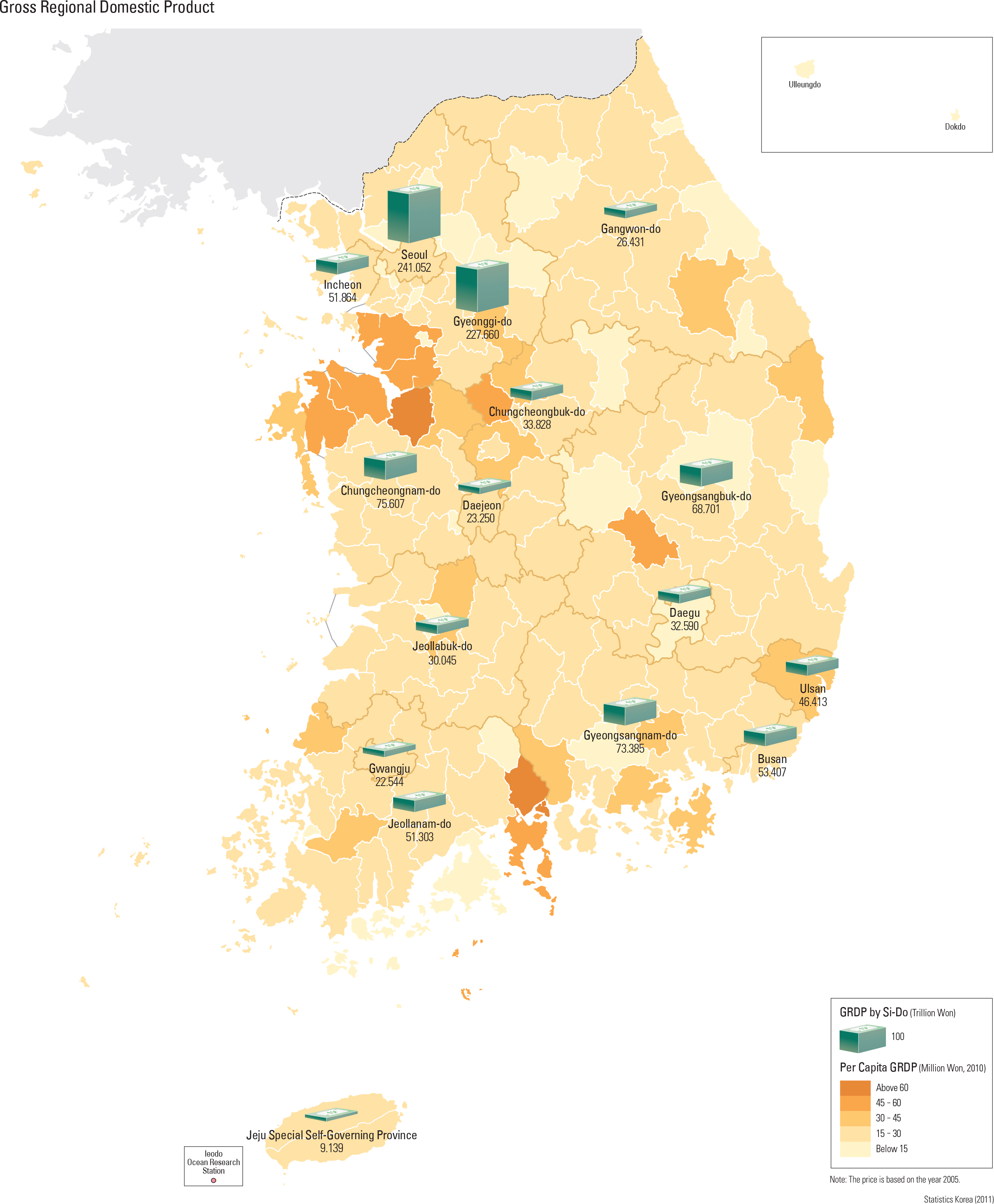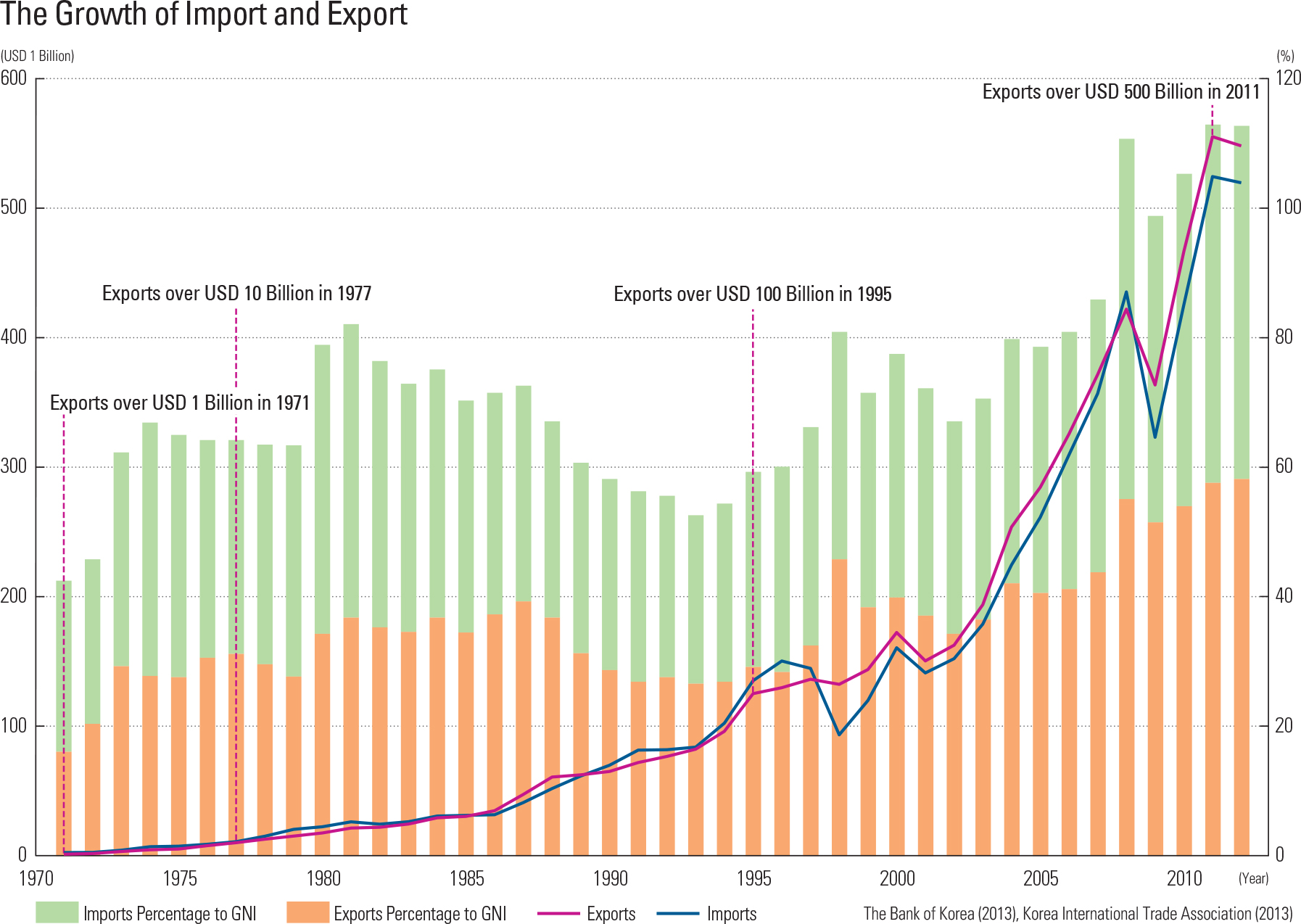English I
The Gross Regional Domestic Product (GRDP) and per capita Gross Regional Domestic Product are examples of regional economic indicators that gauge Korea’s economic development and its current status. The GRDP indicates the total value of final products that were newly created within a certain region during a certain period. Through the GRDP, one can identify the size of the economy, the production level, and the industrial structure of each region, and when this measurement is applied to the national scale, it becomes the Gross Domestic Product (GDP). However, the assessment is not always consistent due to differences in the data and methods used at the time of estimation. The Gross National Income (GNI) indicates the income purchasing power, which is calculated by evaluating and adding the total amount of value added (based on market price) as created by all economic agents of a nation during a certain period, including households, firms, as well as the government. While the GDP is a production indicator used to measure production activities of a nation, the GNI is an income indicator used to measure the welfare level of the people of a nation. page_2 |


